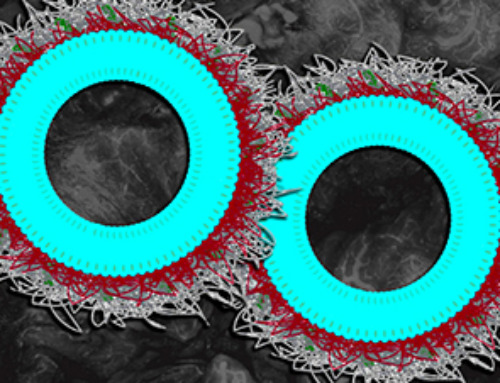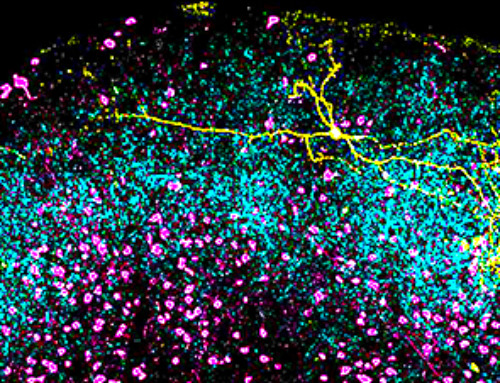Researchers have identified over 4,000 nanomedical clinical trials in progress now, highlighting rapid growth in the field and the need for a standardized lexicon to support clinical translation and collaboration.
Nanotechnology is the science of materials at the nanoscale, where matter behaves differently than it does at larger scales. The unique properties at this size have enabled the development of advanced tools for drug delivery, diagnostics, and therapeutics, tools that can significantly improve how diseases are detected and treated.
When applied to healthcare, nanotechnology has the potential to enhance treatment precision, reduce side effects, and increase therapeutic efficacy. With the help of specialized nanocarriers like liposomes, polymeric nanoparticles, or metallic nanoparticles, clinicians are better equipped to target specific tissues or cells.
However, for researchers to work collaboratively and for findings to be translatable across the globe, a standardized way to understand and unpick scientific work in nanomedicine is required. A recent review published in Nano Today hopes to kickstart a lexicon to do just that.
The Landscape of Nanomedical Trials
To assess the clinical integration of nanotechnology, the researchers analyzed over 500,000 studies from the Aggregate Analysis of ClinicalTrials.gov (AACT) database. Using a novel lexicon built with expert input and generative AI, they picked out 4,114 nanomedical trials spanning various conditions and therapeutic approaches.
Their standardizing lexicon was developed in multiple stages. Experts first created a foundation of terminology, which was expanded using AI-based tools and refined through iterative review. Researchers then used PostgreSQL and Python to extract data on each trial’s registration year, phase, intervention type, and associated medical condition.
This methodology enabled the team to classify a complex and evolving clinical landscape, offering insights into how and where nanotechnology is being applied across medicine.
Trends, Growth, and Ongoing Challenges
The analysis revealed a 38 % increase in nanomedical clinical trials in recent years, reflecting growing interest and investment in this space. Oncology remains the dominant focus, accounting for nearly a third of the trials. However, applications are broadening, with notable activity in infectious diseases, respiratory conditions, and neurological disorders.
There is also increasing diversification in the types of nanocarriers being explored, as researchers seek to improve drug delivery strategies and therapeutic outcomes. But despite this momentum, nanomedical trials still make up less than 1 % of all registered studies.
The field faces several challenges that may explain this discrepancy. Regulatory frameworks for nanomedicine are still maturing, production costs remain high, and designing clinical trials for such complex technologies can be difficult.
One of the study’s key recommendations is the adoption of a universally accepted nanomedical lexicon. Standardized terminology would improve data harmonization and facilitate interdisciplinary collaboration, as well as help streamline regulatory processes. These steps are critical if science is to bring nanomedicine into broader clinical use.
The majority of the trials identified in the review are still in early phases, indicating that much of the field remains in exploratory or proof-of-concept stages. Advancing more studies to late-phase trials will be essential to demonstrating long-term safety and efficacy.
Clinical Potential and Real-World Impact
The study reinforces nanomedicine’s practical value in areas such as targeted cancer treatment, vaccine development, and advanced diagnostics. The response to COVID-19 highlighted the adaptability of nanomedical platforms, with 505 trials focused on mRNA vaccine technologies. This suggests an expanding scope that now includes respiratory infections, HIV, and other pressing global health concerns.
Integrating AI into lexicon development may help to enhance the accuracy of trial classification and support clearer communication among researchers, clinicians, and regulatory agencies. As more multifunctional nanomedicines, such as theranostic agents that combine therapy and diagnostics, enter development, the potential for personalized treatment and real-time monitoring continues to grow.
Looking Ahead: Collaboration and Standardization
The review emphasizes the need for continued interdisciplinary collaboration for nanomedicine to flourish to its full potential. Establishing consistent terminology is not a technical exercise—it lays the foundation for improved communication, regulatory alignment, and clinical adoption.
Another key step is to address existing barriers like high production costs and trial design complexity. Future work in nanomedicine will focus on developing new tools, including integrating advanced machine learning techniques, to accelerate product development and optimization. Efforts are also being made to design multifunctional nanomedicines capable of adapting to individual patient needs and providing real-time therapeutic feedback.
As the field evolves, coordinated efforts between scientists, healthcare professionals, and regulatory bodies are essential for ensuring nanotechnology meaningfully enhances patient care.
Journal Reference
Gultepe, E., & et al. (2025). The landscape of nanomedical clinical trials. nanotoday, 66(102898). DOI: 10.1016/j.nantod.2025.102898, https://www.sciencedirect.com/science/article/pii/S1748013225002701
News
How a Palm-Sized Laser Could Change Medicine and Manufacturing
Researchers have developed an innovative and versatile system designed for a new generation of short-pulse lasers. Lasers that produce extremely short bursts of light are known for their remarkable precision, making them indispensable tools [...]
New nanoparticles stimulate the immune system to attack ovarian tumors
Cancer immunotherapy, which uses drugs that stimulate the body’s immune cells to attack tumors, is a promising approach to treating many types of cancer. However, it doesn’t work well for some tumors, including ovarian [...]
New Drug Kills Cancer 20,000x More Effectively With No Detectable Side Effects
By restructuring a common chemotherapy drug, scientists increased its potency by 20,000 times. In a significant step forward for cancer therapy, researchers at Northwestern University have redesigned the molecular structure of a well-known chemotherapy drug, greatly [...]
Lipid nanoparticles discovered that can deliver mRNA directly into heart muscle cells
Cardiovascular disease continues to be the leading cause of death worldwide. But advances in heart-failure therapeutics have stalled, largely due to the difficulty of delivering treatments at the cellular level. Now, a UC Berkeley-led [...]
The basic mechanisms of visual attention emerged over 500 million years ago, study suggests
The brain does not need its sophisticated cortex to interpret the visual world. A new study published in PLOS Biology demonstrates that a much older structure, the superior colliculus, contains the necessary circuitry to perform the [...]
AI Is Overheating. This New Technology Could Be the Fix
Engineers have developed a passive evaporative cooling membrane that dramatically improves heat removal for electronics and data centers Engineers at the University of California San Diego have created an innovative cooling system designed to greatly enhance [...]
New nanomedicine wipes out leukemia in animal study
In a promising advance for cancer treatment, Northwestern University scientists have re-engineered the molecular structure of a common chemotherapy drug, making it dramatically more soluble and effective and less toxic. In the new study, [...]
Mystery Solved: Scientists Find Cause for Unexplained, Deadly Diseases
A study reveals that a protein called RPA is essential for maintaining chromosome stability by stimulating telomerase. New findings from the University of Wisconsin-Madison suggest that problems with a key protein that helps preserve chromosome stability [...]
Nanotech Blocks Infection and Speed Up Chronic Wound Recovery
A new nanotech-based formulation using quercetin and omega-3 fatty acids shows promise in halting bacterial biofilms and boosting skin cell repair. Scientists have developed a nanotechnology-based treatment to fight bacterial biofilms in wound infections. The [...]
Researchers propose five key questions for effective adoption of AI in clinical practice
While Artificial Intelligence (AI) can be a powerful tool that physicians can use to help diagnose their patients and has great potential to improve accuracy, efficiency and patient safety, it has its drawbacks. It [...]
Advancements and clinical translation of intelligent nanodrugs for breast cancer treatment
A comprehensive review in "Biofunct. Mater." meticulously details the most recent advancements and clinical translation of intelligent nanodrugs for breast cancer treatment. This paper presents an exhaustive overview of subtype-specific nanostrategies, the clinical benefits [...]
It’s Not “All in Your Head”: Scientists Develop Revolutionary Blood Test for Chronic Fatigue Syndrome
A 96% accurate blood test for ME/CFS could transform diagnosis and pave the way for future long COVID detection. Researchers from the University of East Anglia and Oxford Biodynamics have created a highly accurate [...]
How Far Can the Body Go? Scientists Find the Ultimate Limit of Human Endurance
Even the most elite endurance athletes can’t outrun biology. A new study finds that humans hit a metabolic ceiling at about 2.5 times their resting energy burn. When ultra-runners take on races that last [...]
World’s Rivers “Overdosing” on Human Antibiotics, Study Finds
Researchers estimate that approximately 8,500 tons of antibiotics enter river systems each year after passing through the human body and wastewater treatment processes. Rivers spanning millions of kilometers across the globe are contaminated with [...]
Yale Scientists Solve a Century-Old Brain Wave Mystery
Yale scientists traced gamma brain waves to thalamus-cortex interactions. The discovery could reveal how brain rhythms shape perception and disease. For more than a century, scientists have observed rhythmic waves of synchronized neuronal activity [...]
Can introducing peanuts early prevent allergies? Real-world data confirms it helps
New evidence from a large U.S. primary care network shows that early peanut introduction, endorsed in 2015 and 2017 guidelines, was followed by a marked decline in clinician-diagnosed peanut and overall food allergies among [...]





















